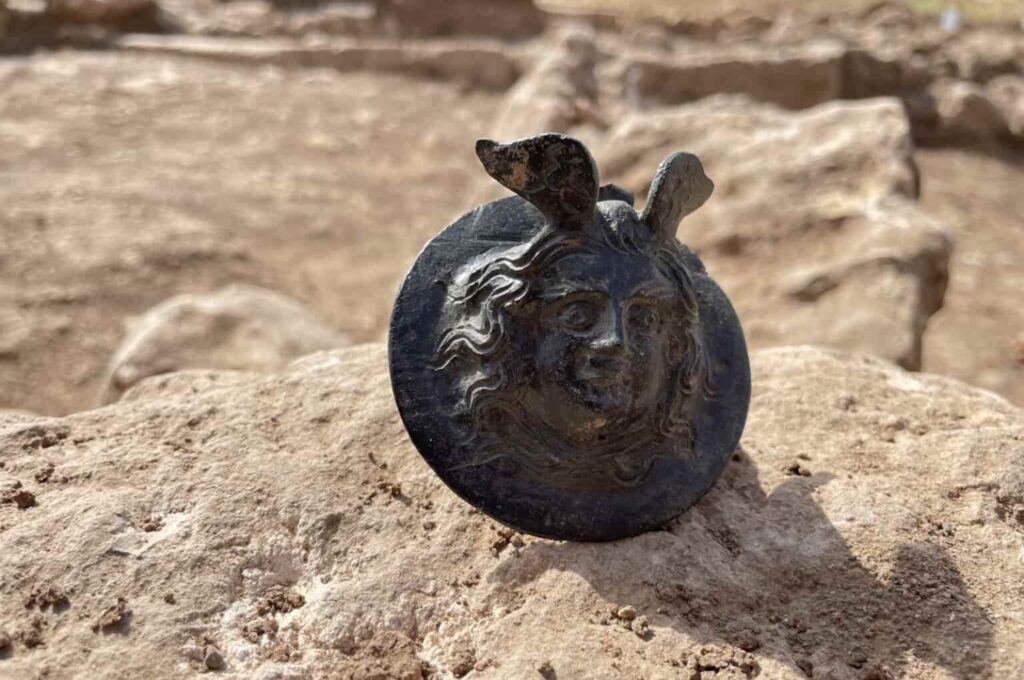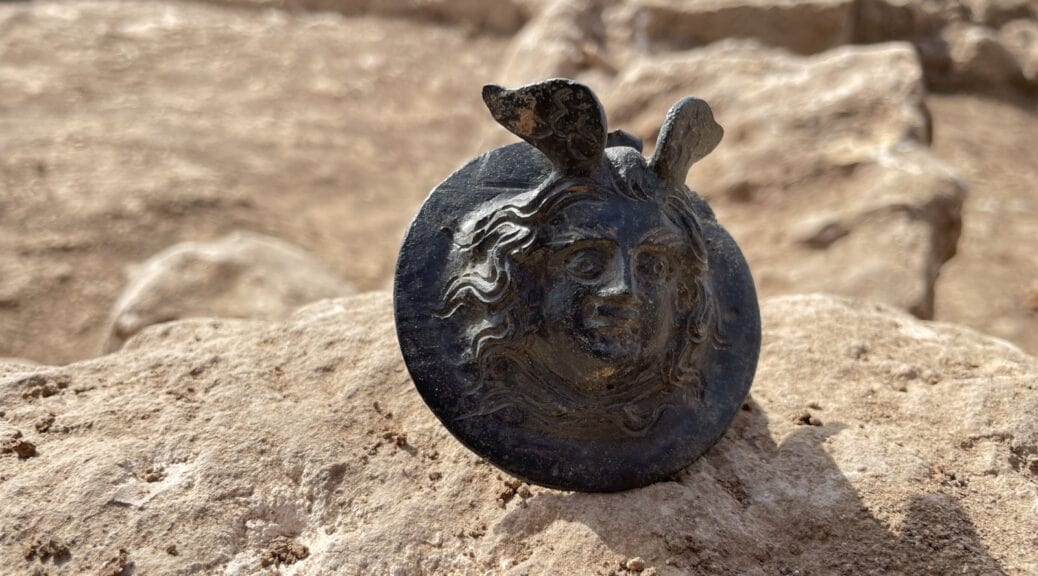Archaeologists Unearth 1,800-Year-Old Military Medal in Türkiye’s Perre
A 1,800-year-old military medal that was given to successful soldiers and troops in the Roman army has been unearthed in an ancient city in southeastern Türkiye, according to archaeologists.
During excavations this year, which have been periodically conducted since 2001, in the ancient city of Perre – one of the five largest cities of the ancient Kingdom of Commagene – in the Adıyaman province, archaeologists found the bronze military medal bearing the head of Medusa, a monster in the form of a woman with snakes for hair, the very sight of which would turn a person to stone.
Mehmet Alkan, director of the Adıyaman Museum, told reporters that excavations continue in the area with mosaics and in the section called the “infinity ladder.”
“The medal with a Medusa head appears as an award given to a soldier for his success,” he explained.
“As it is known, a bronze military diploma, which was given to a Roman soldier named Calcilius Antiquus after he served in different legions of the empire for 20 years, during the reign of Roman Emperor Hadrian, was unearthed in 2021.

This diploma was very important in terms of showing that Roman retired soldiers were placed in the city of Perre during the Roman Empire period,” Alkan said.
“The bronze phalera and the iron sword unearthed during the 2022 excavations are found that support this thesis. Military phaleras, which have examples made of gold, silver, bronze and sometimes glass, can be explained as a kind of medal given to soldiers and troops who were successful in the Roman army,” he explained.
“They can be attached to the breastplates of the soldiers and sometimes to the banners of the troops.
The head of Medusa was carved in relief on the bronze phalera unearthed in the ancient city of Perre. The head of Medusa also functions as a kind of apotropaic symbol, that is, as a protector.”




